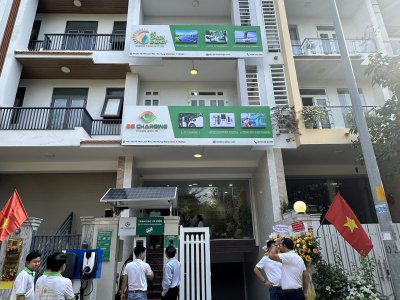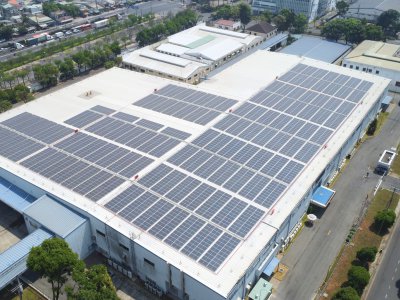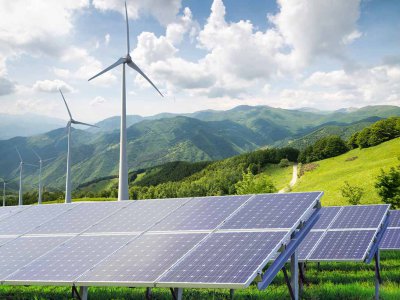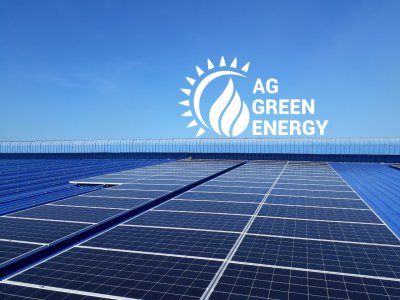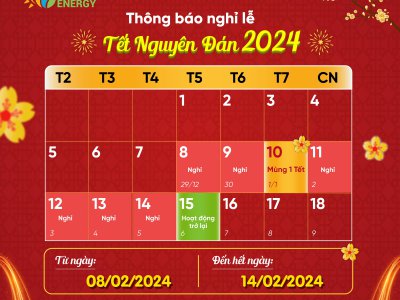On-grid solar power: should it be used?
- 2022/02/14
What is grid-tied solar power?
Grid-tied solar power is a system that uses PV panels to absorb sunlight, generate DC current, this current is sent to the Inverter to convert into AC alternating current of the same phase and frequency, providing supply for electricity demand. This system will be connected to the national grid.
When electrical appliances in the home consume solar power, there will be 3 cases:
- When the solar power produced is smaller than the amount of electricity being used: electricity from the national grid will automatically compensate for enough electricity to use.
- When the solar power produced is equal to the amount of electricity in use: at this time, the solar power system will prioritize using solar power and not consume electricity from the national grid.
- When the solar power system generates a larger amount of electricity than the current load, the excess electricity will be pushed to the national grid, then the 2-way meter equipment will be recorded and purchased by EVN (for roof voltage).
Advantages:
- Has a simple structure and is not too complicated.
- Low initial investment cost, no need to buy additional storage batteries like stand-alone solar power systems.
- Maintenance costs during use are quite low
- High energy conversion efficiency.
- Highly durable, the life of all system components can be up to 25 years.
- If there is surplus electricity from the system, it can be sold to EVN.
- Short payback period (about 5-7 years depending on system size, electricity demand, installation conditions).
- Currently, in Vietnam, there is also a policy to encourage the development of this grid-connected solar power system.
Defect:
- Depends on the national grid, can only operate when the national grid is active.
Application:
- Suitable for households that need to use a lot of electricity during the day such as households, offices, factories, businesses,... Especially, for households with electricity bills from 1 million/month or more will save 30% - 50% of monthly electricity bill.
- Suitable in areas with a stable power supply.
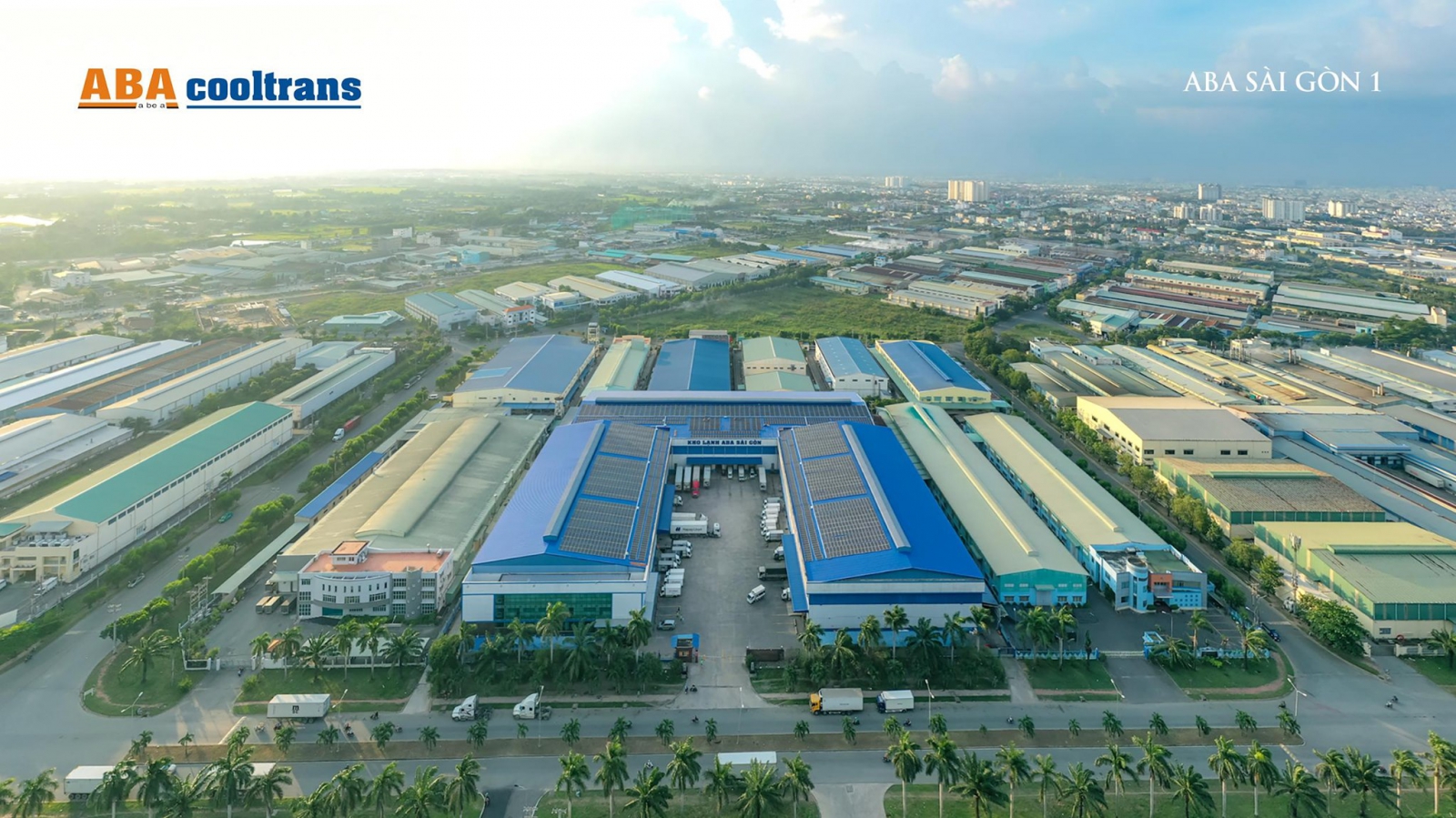 On-grid solar power system at cold storage
On-grid solar power system at cold storage
 Solar power system connected to the grid at the hostel
Solar power system connected to the grid at the hostel
Is using grid-tied solar power dangerous? (More)
-
For human
In fact, the world has never recorded any case of solar power installation affecting human health. Because the solar power system works on the principle of photovoltaic effect, converting light energy into electricity, this process is completely closed and does not need any human intervention.
In addition, before connecting to the national grid, the power agency will always check carefully before the grid-connected solar power system comes into operation. The process of installation and connection is checked for sure before being put into use, so there is no danger. If you choose the equipment in the system that is manufactured and tested strictly according to international regulations of reputable brands, the grid-tied solar power system is safe and not harmful to people. .
In particular, solar panels installed on roofs and terraces also help block sunlight and reflect heat back into the atmosphere. As a result, the user's living environment becomes cooler.
2. For the environment
Does the manufacturing process of solar panels pollute the environment?
Although it can be said that grid-tied solar electricity is very friendly to the environment, in reality, the manufacturing process of panels produces NF3 (nitrogen trifluoride) gas which is a colorless, odorless, non-burning gas. on fire. NF3 has the ability to absorb hot gas from the sun longer than CO2. Lasts in the atmosphere 5 times longer than CO2. Although manufacturers have eliminated a lot of NF3 gas, there is still a small amount escaping, which has a negative effect on the atmosphere.
However, according to Tim Donaghy, Senior Researcher at Greenpeace, "NF3 contributes to global warming, but the benefits of solar power outweigh its negative effects". If the production process controls NF3 gas, this effect is not significant. Currently, a number of companies in Europe have applied new technology, allowing to recover more than 90% of hazardous materials in solar cells and minimizing NF3 emissions. In addition, during operation, the grid-tied solar power system does not emit CO2. Using solar power also helps reduce the amount of electricity used from coal-fired power plants. As a result, the coal-fired power plant's electricity production is reduced resulting in a reduction in CO2 emissions.
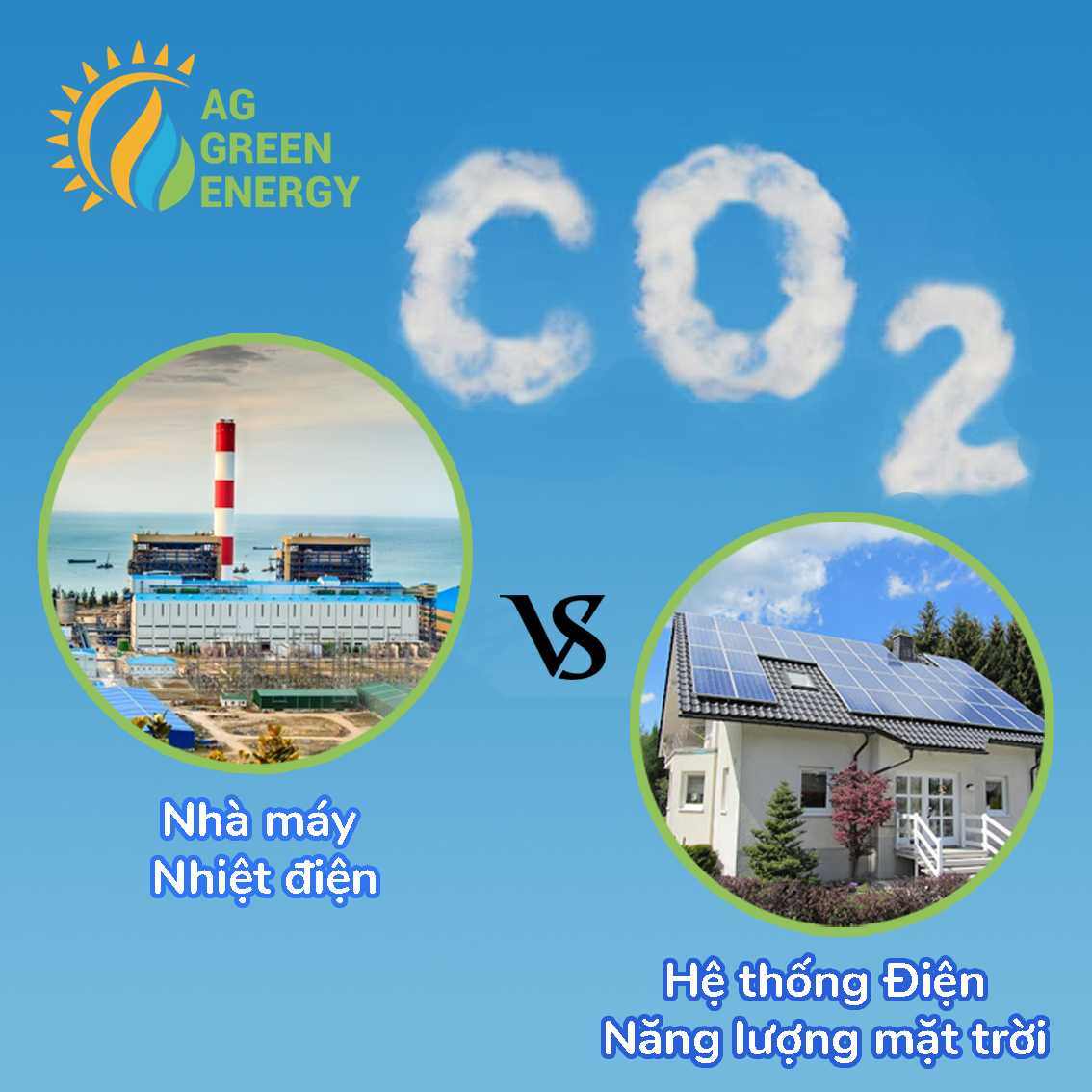
Affect land and water?
Depending on the type of system, solar panels can be installed on the roof, terrace or ground, water surface, and this system does not affect these structures at all.
Ground-based solar power: It only takes up installation land but does not affect the ground and surrounding areas. For the surrounding land area without installing solar panels, the investor can still grow crops normally.

Floating solar power: There are buoys to support the solar panels, so it does not affect the water source. Not only that, the upper panels also limit wind and sunlight, so less water evaporates in the dry season. The shade of the panels also helps limit algae blooms, increase oxygen levels and improve water sources for aquatic species to grow.
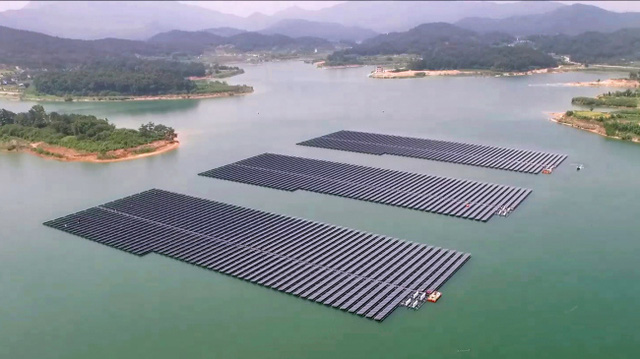
The problem of recycling panels in the future?
Solar panels do not pollute the environment during installation and use, but due to damage or after 20-30 years, expired panels will be recycled. There are many different ways, but the majority is to separate the material components that make up the panel (glass, cell, metal, plastic/polymer) to produce new solar cells, or for other purposes. However, this process is still difficult and the recycling cost is relatively high, making many businesses afraid to invest in solar power.
Investment secrets to achieve the highest efficiency
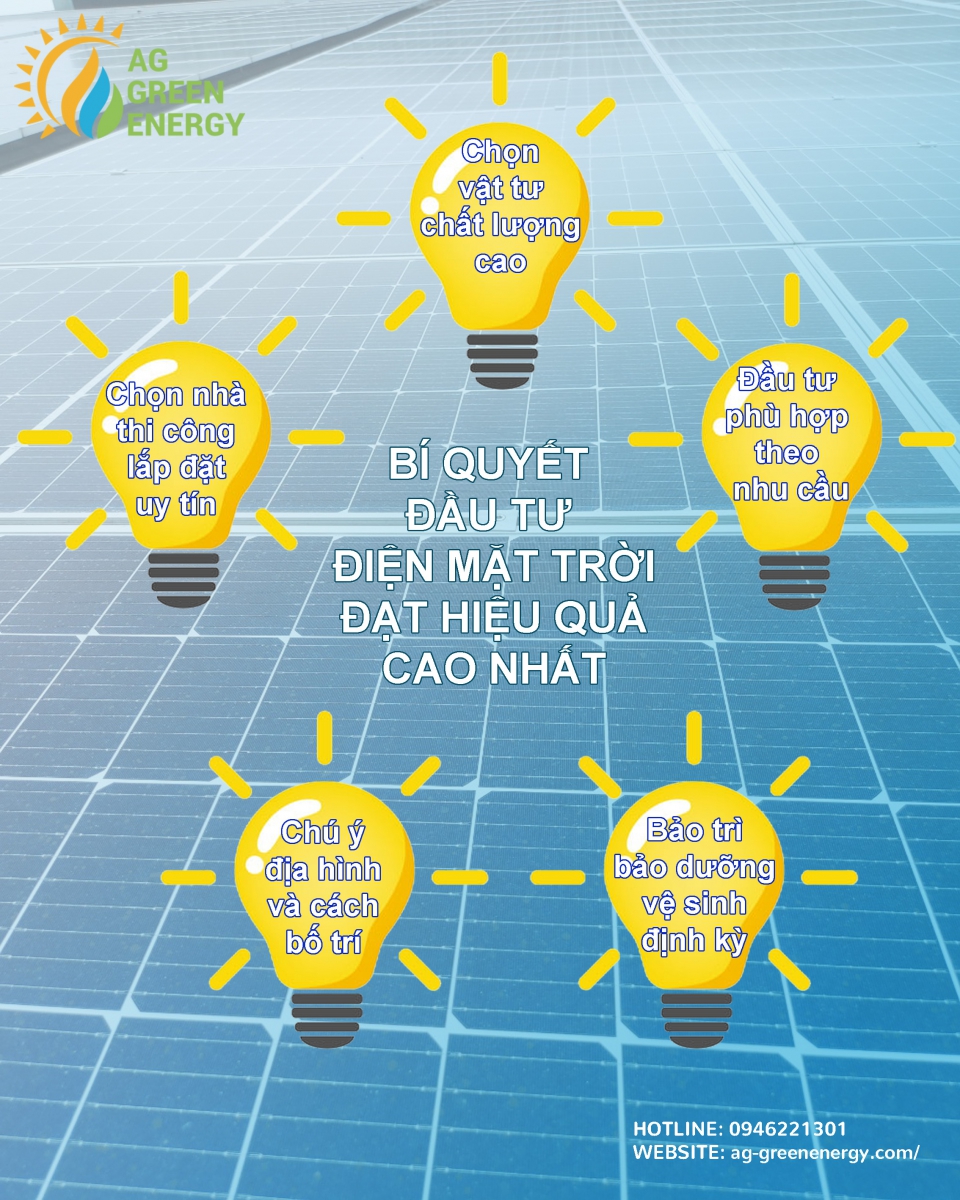
- Many people think that if you minimize the initial cost by choosing cheap materials, you will quickly get your capital back, and the economic efficiency when investing in solar power for your home will be higher. This is completely wrong.
- Cheap but low-quality materials will not guarantee the performance and longevity of the solar power system, especially with solar panels. Poor quality panels will have low efficiency, low power output, reducing investment efficiency. Although their costs are often high, in terms of long-term profits, this is a smart choice because you will save a lot of money on replacement equipment.
- This factor is very important and investors should pay attention when deciding to invest in solar power. Because, if the rooftop solar power system is installed according to technical standards, it will ensure electrical safety as well as operating performance and system life. If the installation is not carried out carefully, does not meet the technical and quality criteria, the system may operate but not at optimal capacity or will quickly arise technical problems after a while. operate.
- The electricity demand of each household, factory, etc. is different, so the deployment of solar power system investment also needs to be flexible to bring the highest efficiency.
- Investing in solar power is investing in a system with a lifespan of up to 25 years. Therefore, in order to avoid costly renovations in the future and to optimize efficiency, it is recommended that you install grid-tied solar power systems in areas with strong structures.
- In addition, there are some notes about the placement of solar panels:
- Do not install vertically or too steeply as this will reduce the exposure time.
- Do not install on a horizontal surface, it will easily cause water and dust to accumulate on the surface.
- Avoid installing in locations with many sunblocks such as tall buildings.
5. Periodic maintenance, maintenance and cleaning
Here are 5 timelines you should know so that you can always be proactive in maintaining your rooftop solar power system:
- Daily/Weekly/Monthly: should monitor the output of electricity produced to check that your system is operating normally and stably or not.
- Under 3 months: There is no need to maintain the rooftop solar power system if there is no strong external force on the equipment or the equipment is of too poor quality.
- Quarterly (3 months): check the dirt level of the solar panel system. It is recommended to clean the panels at least twice a year (every 2 quarters) to increase maximum efficiency.
- Annually: should check the following information: solar panels; check the bonded system of frames, conductors, electrical cabinets; check inverter grid.
- Every 5 years: overall inspection of the entire solar power system (frame system, wiring, battery system, equipment in electrical cabinets, annual power output, fuses, CBs, connectors...).
AG Green Energy with a professional and experienced technical team will wholeheartedly advise and install the most effective grid-tied solar power system for you. In addition, we also have O&M Services - Operation, maintenance, maintenance, maintenance, cleaning of solar power systems, helping your system always achieve high performance.



